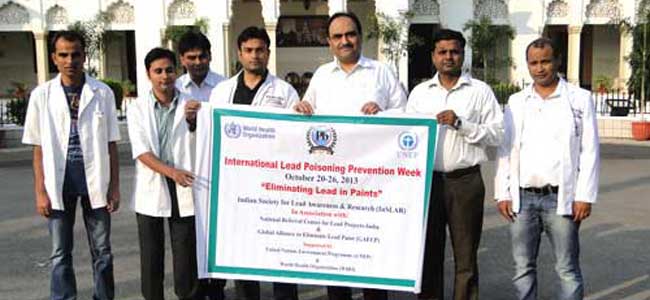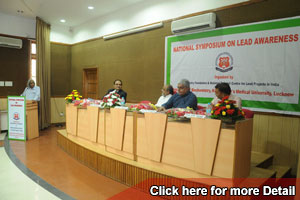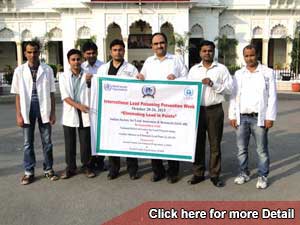
“International Lead Poisoning Prevention Week”
October 20-26, 2013
Lead poisoning is entirely preventable, yet according to the World Health Organization childhood lead exposure is still estimated to contribute to about 600,000 new cases of children with intellectual disabilities every year. Even though there is wide recognition of this problem and many countries have taken action, exposure to lead, particularly in childhood, remains of key concern to health care providers and public health officials worldwide. Paints containing high levels of lead are still widely available and used in many countries for decorative purposes, although good substitutes without lead are available.
The International Week of Action on Prevention of Lead Poisoning is an opportunity to mobilize political and social commitment for further progress.
Indian Society for Lead Awareness & Research (InSLAR) in association with “Global Alliance to Eliminate Lead Paint” (GAELP) supported by United Nations Environment Programme (UNEP) & World Health Organization (WHO) initiated the “International Lead Poisoning Prevention Week” on 20th October 2013. A large number of students and other participants assembled under the leadership of Prof. Abbas Ali Mahdi, President of Indian Society for Lead Awareness & Research (InSLAR), at K.G. Medical Uiversity Campus & then at Parivartan Chowk to create awareness in the general public. They distributed pamphlets appealing the government agencies to stop adding lead to paints for safeguarding the future of children.
Prof. Mahdi said that lead poisoning is a serious child health concern throughout the world. Children are most likely to be exposed to ingestion of flakes and dust from decaying lead-based paint. This affects children’s brain development and their measurable level of intelligence (IQ). After it enters the body, lead is distributed to organs such as the kidneys, liver, and bones. The body stores lead in the teeth and bones where it accumulates over time. Undernourished children are more susceptible to lead because their bodies absorb more lead if other nutrients, such as calcium, are lacking.
Prof. Mahdi also informed that at highest risk of lead poisoning are the children, the very young (including foetuses) and the impoverished. He said that there is no known safe blood lead level but it is known that, as lead exposure increases, the range and severity of symptoms and effects also increases. Even blood lead levels that are around 10 ug/dl, once thought to be a “safe level,” may lead to decreased intelligence in children, behavioral difficulties and learning problems. Other central nervous system functions (CNS) are suspected of being affected by slight lead elevations and are under research.
Higher blood lead levels can result in CNS effects, reduced IQ, impaired growth, harm to the kidneys and other organs, and compromise red blood cell development. Acute lead poisoning can eventually result in convulsions, coma and sometimes death. Lead absorbed by the foetus can cause miscarriage, premature birth or low birth-weight.
Apart from Prof. Mahdi, Dr. M.K. Ahmad, Dr. Tabraz Jafar, Dr. Sarwat Taqi, Mr. Ali Meesam, research scholars and students of KGMU participated in the event.


